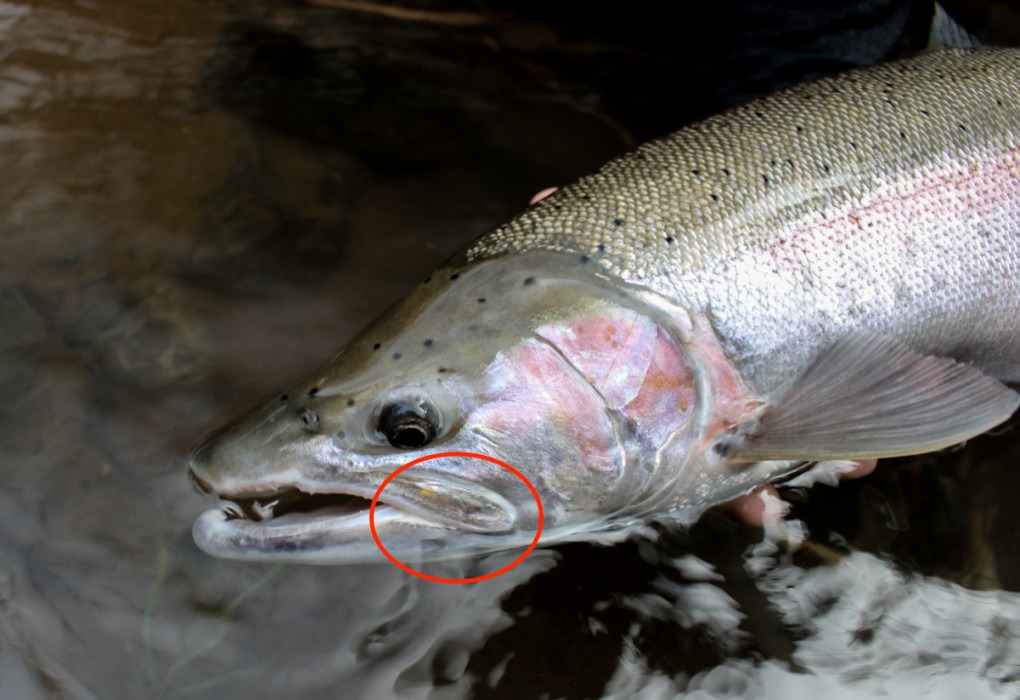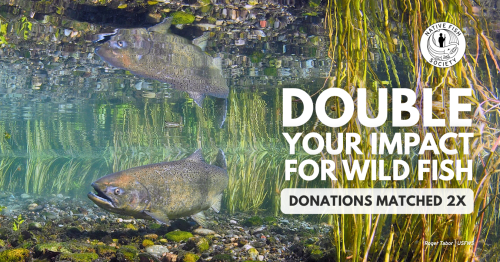What is a maxillary clip?
We often get questions about what a maxillary clip represents. The maxillary is a bony structure, located on the upper jaw of a fish, circled in red on the photo above. When a fish has a maxillary clip, does that mean it is a hatchery steelhead? Does it denote a wild steelhead for research purposes? In many places fisheries biologists clip off the maxillary with scissors to mark fish for various purposes.
In watersheds such as the Upper Deschutes River, Metolius River, and Crooked River a maxillary clip, right or left, can represent the origin of the fish. In these rivers, smolts being produced in a hatchery for the reintroduction of fish above Lake Billy Chinook are released into the tributaries with a left maxillary clip (LM). Natural origin fish, which are subsequently detected and identified as not having a LM clip at the Fish Transfer Facility (FTF) are marked with a right maxillary (RM) clip as they move downstream as smolts. While both of these fish have intact adipose fins to ensure they are released in recreational fisheries, the maxillary clips allow fisheries biologists to assess whether or not the reintroduction effort is becoming self sustaining.
In other basins, such as the Nestucca River, an adipose fin clip and a maxillary clip are only used to mark hatchery fish. Left maxillary clips denote that they are an Alsea strain segregated hatchery fish, which mainly consist of the early returning steelhead. Nestucca broodstock hatchery fish, or fish which are the progeny of wild Nestucca fish and raised in the hatchery, are marked with a right maxillary clip. Both of these fish can be retained by anglers, and the purpose of the clip is to assess the returns of each hatchery stock.
Depending on your location, the presence of a maxillary clip can mean different things. Reach out to your district fish biologist to check and see if there are any of these marks on fish in watersheds you visit. If you encounter a maxillary clip on a fish note which side it is on, and report it to a River Steward and the biologist responsible for that watershed.
What is a Maxillary?
